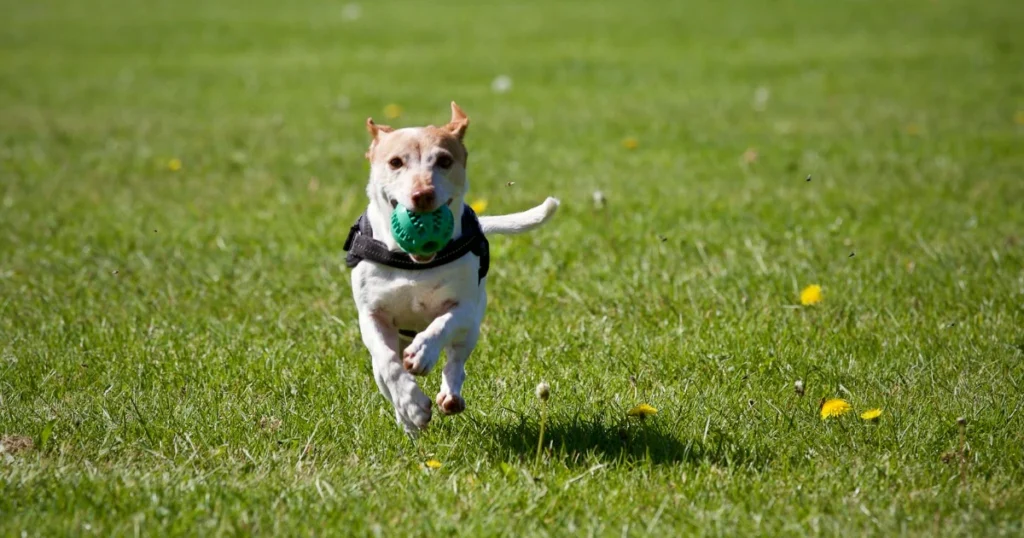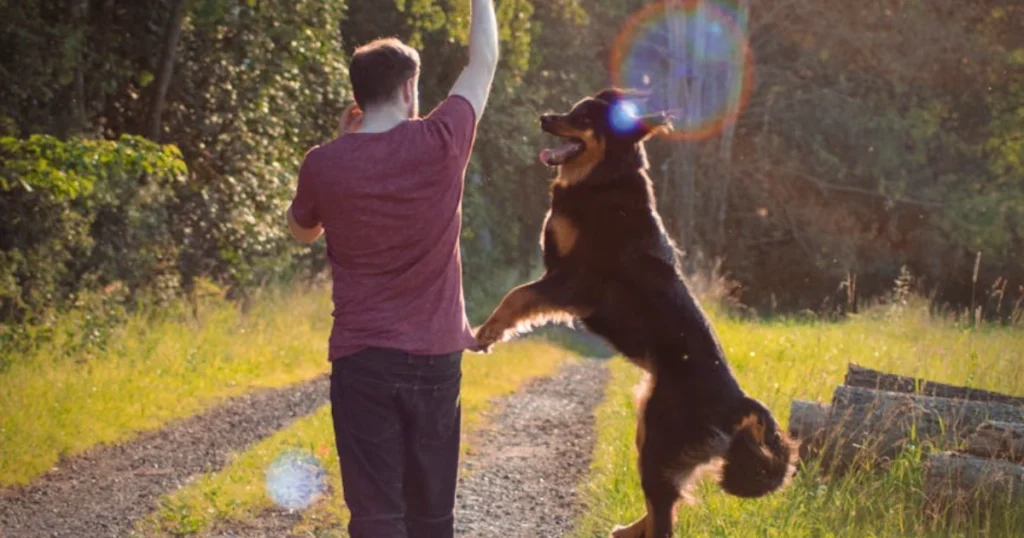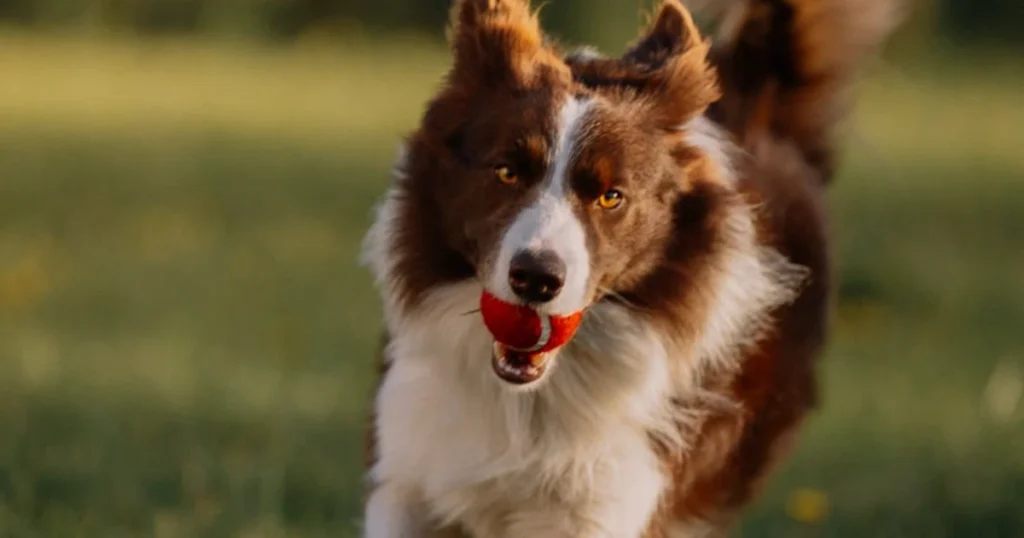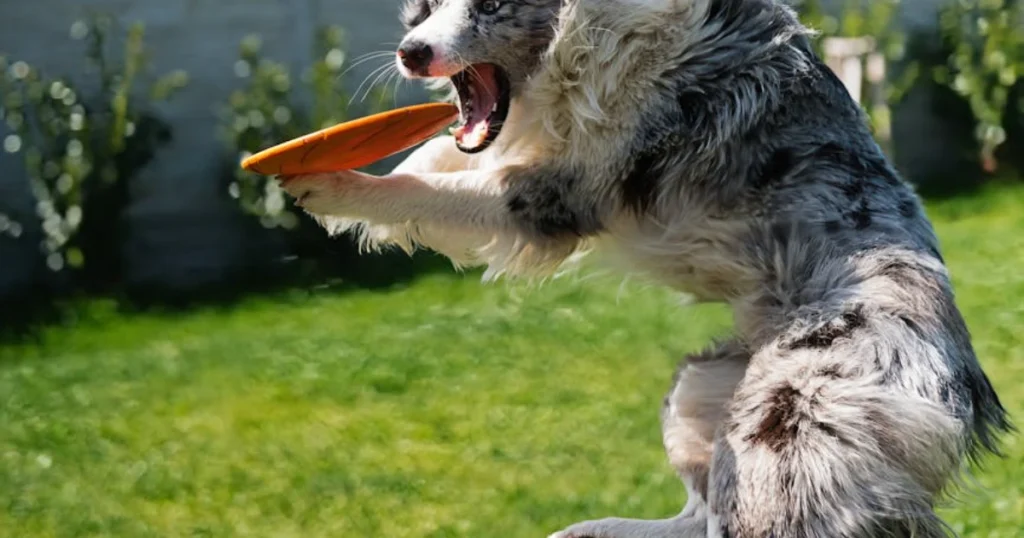Training your dog doesn’t have to be complicated. Over the years, I’ve found that the simplest exercises often lead to the biggest breakthroughs. Whether you’re working with a new puppy or an older rescue, these three dog training exercises will help you build motivation, improve control, and create a bond that makes listening feel rewarding for your dog—and for you.

How To Teach Your Dog to Accept Collar Grabs?
Let’s be honest: most dogs aren’t thrilled when you reach for their collar. I’ve seen plenty of pups dart just out of reach, turning a simple leash-up into a game of tag. But teaching your dog to come close and let you grab their collar is a game-changer for safety and everyday control.
Making Collar Grabs Enjoyable
Here’s how I flipped the script with my own dog. Instead of reaching out (which can feel threatening), I started using treats to lure her in. I’d hold a tasty treat right to her nose and slowly draw her toward me. While she was munching, I’d gently slip my hand under her collar—no sudden moves. The trick is to make the best part happen while your hand is on the collar. I’d reward her several times in that position, then release. After a few sessions, she started offering her collar willingly, tail wagging.
Helpful Hints for Collar Grabs
- Bring your hand close to your own knee before grabbing the collar. This ensures your dog is truly close and comfortable.
- Don’t rush—let your dog set the pace. If they hesitate, go back a step and make it easier.
- Always finish with a reward. Consistency builds trust.
Expert Insight: “Collar grabs are a foundation for safety. If your dog learns to love this, you’ll have an easier time in emergencies and day-to-day handling.” — Dr. Sophia Yin, DVM, animal behaviorist

How to Build Value for Your Dog’s Name?
There’s nothing quite like calling your dog’s name and seeing them whip around, eyes bright, ready for action. But that response doesn’t happen by accident. You have to build real value for their name, so it means “good things are coming.”
Associating the Name with Positive Reinforcement
Start with a handful of treats. Say your dog’s name—just once—while they’re in front of you. Wait a second, then feed. Timing is everything: name first, treat second. After a few rounds, you’ll see your dog perk up at the sound of their name.
Practicing with Distractions
Now here’s where most people mess up: they only practice in quiet settings. I learned the hard way that you need to add distractions. Call your dog’s name while they’re sniffing or mildly distracted. If they look at you, jackpot! Reward generously. If not, help them succeed by showing the treat and guiding their attention.
Using Toys as Rewards
Some dogs are more toy-driven than food-motivated. My border collie, for example, would do backflips for a tug toy. Use whatever your dog loves—treats, toys, or even a quick game of chase. The key is making their name predict something awesome.
Maintaining Control with a Long Line
During early training, I always use a long line. It gives my dog freedom to explore but lets me gently guide them back if they get distracted. It’s a safety net that keeps training positive and stress-free.
Avoiding the Chase: Backing Away
Chasing your dog rarely works. Instead, try backing away and calling their name. This taps into their natural chase drive and makes coming to you the fun choice. I’ve seen even stubborn dogs light up and come running when you make it a game.

3. Establishing Leadership with Stationary Exercises
Dogs thrive when they know what’s expected. Leadership isn’t about being bossy—it’s about being clear, consistent, and fair. Stationary exercises like “wait” are my go-to for teaching impulse control and respect.
The Importance of Being Clear, Consistent, and Fair
- Clear: Use simple cues and always reward the right behavior.
- Consistent: Practice daily, in different places and situations.
- Fair: Set your dog up for success. Don’t ask for too much, too soon.
These skills help your dog stay calm at doors, stairs, or busy sidewalks. I use “wait” every time we leave the house or get out of the car. It’s saved me from more than one parking lot dash!
Teaching the ‘Wait’ Command
- Start with your dog at your side. Say “wait” and hold your hand out, palm toward them.
- Step in front of them, toe to toe. Reward for staying put.
- Gradually increase the distance and distractions. If they move, calmly guide them back and try again.
- Always use a release word (“okay!”) so your dog knows when they’re done.
Leveling Up Wait Training
Once your dog gets the basics, make it harder: step farther away, add a toy or treat as a distraction, or practice at the front door. I like to wiggle the leash or drop a treat on the ground—if my dog holds position, it’s party time!
Stay vs. Wait: What’s the Difference?
With the “stay” cue, your dog shouldn’t move until you return. With “wait,” you can release them from a distance. I use both, depending on the situation. It’s a subtle difference, but it matters in real life.
Increasing Challenges and Handling Mistakes
As you add challenges, mistakes will happen. That’s normal. If your dog breaks position, calmly guide them back and reward when they succeed. I always mark the right moment with a cheerful “yes!” and keep sessions short and upbeat.
Integrating Training into Daily Routines
Here’s what actually surprised me: the more I worked training into daily life—waiting at doors, before meals, or while picking up toys—the faster my dog learned. Training isn’t just for “sessions.” It’s part of every interaction.
The ‘Rule Out’ Exercise
This exercise is a lifesaver for dogs who snatch treats. Hold a piece of kibble in your open palm. If your dog lunges, close your hand. When they back off or sit, open your hand again. Repeat until your dog waits politely for the treat. It’s a simple way to build self-control and trust.
Try this on your dog’s bed or mat. If they get up, just calmly reset. Over time, you’ll see them pause, look to you, and make better choices—even when temptation is right in front of them.

Final Thoughts: What Finally Worked for Me
Dog training isn’t about perfection—it’s about progress. These three exercises changed the way I connect with my dog. They’re simple, practical, and work in the real world. Remember, your dog’s success is tied to your consistency and leadership. Keep it fun, keep it positive, and you’ll both enjoy the journey.
Frequently Asked Questions
How often should I practice these dog training exercises?
Short, daily sessions (5–10 minutes) work best. Consistency is more important than duration.
Can I use these exercises with older dogs?
Absolutely! Dogs of any age can learn new behaviors. Just adjust the pace and keep sessions positive.
What if my dog isn’t food motivated?
Try using toys, praise, or play as rewards. The key is finding what excites your dog most.
How do I handle mistakes during training?
Stay calm, reset the exercise, and reward when your dog gets it right. Mistakes are part of learning.
Is it okay to train in different locations?
Yes! Practicing in various environments helps your dog generalize the skills and respond reliably anywhere.
Related:
- Positive Reinforcement Dog Training
- Teaching Dog Recall
- Puppy Training Basics
- Impulse Control Games
- Leash Training Tips